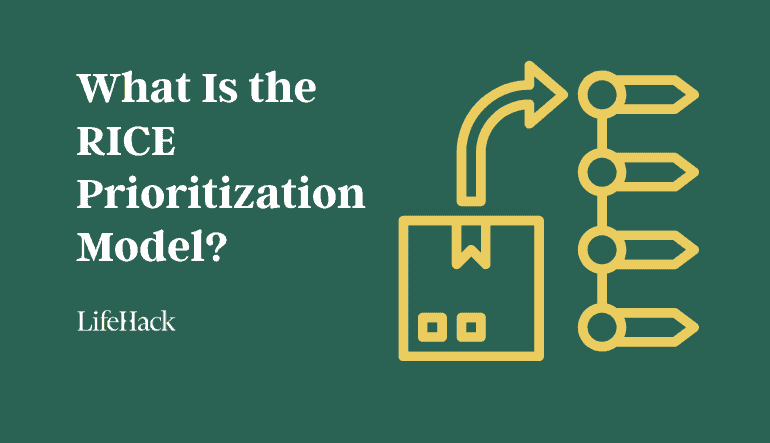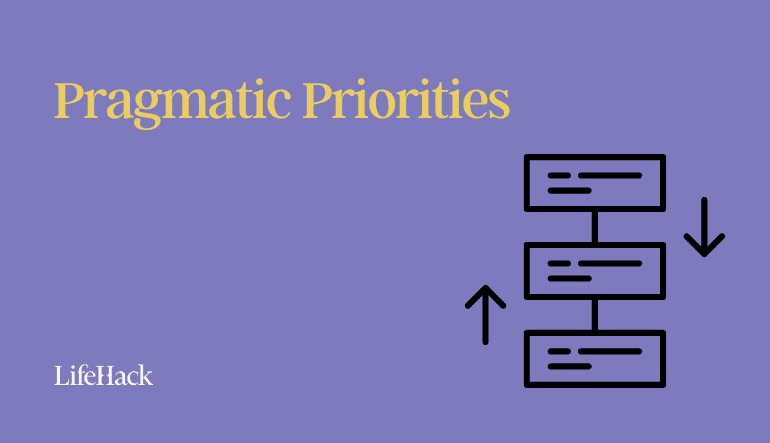Table of Contents
Introduction
Long-term goals are the compass that guides a professional’s career journey. In simple terms, a long-term goal is an objective you aim to achieve in the distant future, typically several years or even decades from now. It’s the big vision that goes beyond your day-to-day tasks – like becoming an industry expert, climbing to a leadership position, or launching your own successful company. These are not overnight ambitions, but sustained pursuits that unfold over time.
In the hustle of daily work, it’s easy to get caught up in immediate deadlines and short-term fires. Yet the most successful professionals often credit their achievements to having clear long-term goals. A compelling long-range goal serves as a North Star, helping you prioritize what really matters and make strategic decisions. When you know where you want to be in five, ten, or twenty years, you can align your current efforts with that vision. This alignment between present action and future aspiration is crucial for career advancement and personal fulfillment.
In his characteristic thoughtful tone, emphasis is placed on focusing on what’s important rather than what’s immediately pressing. Long-term goals force us to zoom out and ask: What am I really trying to achieve in my career? By answering this, we set a direction that can organize and motivate all our short-term efforts. In a sense, having a long-term goal is about being deliberate with your life’s work, rather than simply drifting from one opportunity to the next.
In this article, we will explore what long-term goals mean for professionals and why they are so important. We’ll dive into scientific research on goal-setting and success, and provide practical strategies for setting and achieving your own long-term objectives. We’ll also discuss common challenges you might face along the way and how to overcome them, drawing on evidence-based advice. Additionally, through examples and case studies – from scientific findings to famous figures and even a timeless parable – we’ll see the real power of long-term thinking in action.
By the end, you should have a clearer understanding of how to craft your own long-term goals and the confidence to pursue them. Let’s begin by examining why long-term goals matter so much for professional success.
The Importance of Long-Term Goals
Why should busy professionals bother with long-term goals? The simple answer is that long-term goals provide direction and meaning for your career. Without a long-term aim, you might work hard but feel like you’re running on a treadmill – lots of effort, but not necessarily moving closer to something that truly matters to you. Setting a long horizon goal ensures that your daily and yearly efforts accumulate toward a significant achievement.
Scientific research strongly supports the value of having long-term goals and a future-oriented mindset. Psychologists often talk about “future orientation,” which is essentially the habit of planning and working toward future objectives. Studies have found that individuals who are future-oriented tend to achieve better outcomes in various areas of life. For example, a study in the Journal of Career Assessment found that professionals who think ahead and set long-range career goals show higher work engagement and adaptability, and even feel more confident about their employability [1]. In other words, having a vision for your future can make you more proactive and resilient in your career today.
Long-term goals can also tap into our intrinsic motivation. When you’re pursuing something you deeply care about over the long run – like building a company that revolutionizes your industry or becoming a respected leader in your field – you’re driven by more than immediate rewards. Intrinsic motivation (doing something because it’s personally fulfilling) tends to enhance creativity, persistence, and satisfaction. A big goal that aligns with your core values can light a fire inside you that keeps you going through the ups and downs of professional life.
Moreover, long-term goals help in decision-making. Think of your career as a journey: if you know the destination, it’s easier to choose the right path. With a clear end goal in mind, you can filter opportunities and allocate your time wisely. Decisions like whether to take a particular job, pursue an advanced degree, or learn a new skill become simpler when you can ask, “Does this move me closer to my long-term goal?” This prevents the common pitfall of drifting or getting sidetracked by short-term temptations that don’t contribute to your big picture.
There’s also a psychological benefit: long-term goals give you a sense of purpose. Knowing that your everyday work is contributing to a meaningful long-term narrative can be incredibly motivating. It turns even mundane tasks into steps on a ladder climbing toward something significant. Research in positive psychology indicates that having purpose and goals is linked to greater life and job satisfaction. When you have a long-term goal, you’re not just clocking in hours; you’re investing in a vision.
Strategies for Setting and Achieving Long-Term Goals
Having a goal is one thing; achieving it is another. Long-term goals can seem daunting – after all, they often involve many steps and years of work. The key is to break down the journey and use effective strategies to stay on track. Here are several proven strategies and frameworks for defining and reaching your long-term goals:
Make Your Goals Specific and Challenging (SMART Goals): Start by clearly defining what you want to achieve. A vague goal like “I want to be successful” isn’t very helpful. Instead, make it specific: for example, “I want to become a certified project manager and lead large-scale IT projects within the next 5 years.” The SMART criteria is a useful guideline: ensure your goal is Specific, Measurable, Achievable, Relevant, and Time-bound. Research shows that specific and challenging goals boost performance far more than easy or vague goals In fact, goal-setting theory, pioneered by psychologists Edwin Locke and Gary Latham, has demonstrated across hundreds of studies that people perform better when they have clear, challenging targets rather than abstract aspirations [2]. So set a big goal and define it sharply – make sure it stretches you beyond your comfort zone.
Break Down Big Goals into Milestones: A long-term goal can feel overwhelming if you look at it as one giant leap. The strategy is to slice it into smaller, manageable pieces. These are your short-term and medium-term targets (often called sub-goals or milestones) that ladder up to the big objective. For instance, if your long-term goal is to become a department director in 10 years, your milestones might include completing a leadership training program in 2 years, managing a team of 5+ people in 5 years, and so on. Each milestone should itself be a mini goal that is concrete and time-bound. This approach not only makes the journey less intimidating, but also creates checkpoint victories that keep you motivated. It’s like running a marathon – you focus on reaching the next mile marker rather than obsessing about the finish line from the start.
Track Progress and Stay Accountable: A goal set and forgotten is just a dream. To reach a long-term goal, regularly monitor your progress and hold yourself accountable. Break milestones into actionable tasks and review your progress on a set schedule (e.g., weekly or monthly). Consider using an accountability partner or mentor for external check-ins. Studies suggest that simply writing down your goals — and sharing updates with a friend — can dramatically increase your chances of success, because it turns your intentions into a concrete commitment.
Be Flexible and Adjust as Needed: Long-term planning does not mean rigidly sticking to a script. Over the course of years, industries change, and you will grow and learn. It’s important to review and adjust your long-term goals periodically. Think of your goal as a destination and your plan as the route – if one road is closed, you find an alternate path, but you still aim for the same destination. You might even refine the destination if your interests or the landscape of your industry change. For example, you might realize a few years in that a slightly different aim excites you more – and that’s okay. Adapting your goal isn’t failure; it’s making sure your ambition stays aligned with your passion. Stay committed to the purpose of your goal, but be flexible in the path you take to get there.
Leverage Habits to Support Your Goals: According to behavioral science, our daily habits are powerful determinants of where we end up long-term. Try to build habits that align with your long-term goals. If your goal is to write a book in 5 years, establish a habit of writing for 30 minutes every morning. If your goal is to expand your professional network, make it a habit to reach out to a new contact or colleague each week. Habits make progress automatic – you don’t have to rely on willpower for each action. Psychologists have found that when striving for long-term goals (like staying healthy or saving money), people who form consistent habits are more successful in controlling their behavior in line with those goals [3]. By building these habits, you reduce reliance on willpower and stay consistent without exhausting yourself.
Implementing these strategies creates a framework for success. Essentially, you are engineering your environment and mindset to favor long-term achievement. You set a clear direction, plot the stepping stones, prepare for obstacles, and build supportive routines. It’s not quick or easy, but it is effective. Next, let’s discuss some of those obstacles in detail – the common challenges professionals encounter on the road to long-term goals, and how to overcome them.
Common Challenges and How to Overcome Them
Chasing a long-term goal is a bit like running a marathon: you will inevitably face challenges along the way. It’s normal to encounter periods of doubt, distraction, or difficulty. The good news is that these challenges are well-known, and there are proven ways to overcome them. Here are some common obstacles in pursuing long-term goals and strategies to deal with them:
Short-Term Distractions and Urgent Tasks: One of the biggest challenges is that urgent day-to-day matters can distract from your important long-term objectives. It’s easy to spend all your time putting out fires or responding to emails, only to realize you haven’t made progress on your big goal. To overcome this, practice time management techniques like time-blocking (schedule dedicated time for your long-term project) or setting aside an “hour of power” each day to work on your goal before other tasks. Learning to prioritize sometimes means saying “no” to requests that don’t align with your main objectives. Remember, every yes to a trivial task is implicitly a no to using that time for your goal. Keep your North Star visible – some professionals literally pin a reminder of their long-term goal at their workspace to help refocus their attention when they get pulled into the weeds.
Lack of Immediate Results (Staying Motivated): Long-term goals often lack immediate payoffs, making it hard to stay motivated. This is where grit comes in – the passion and perseverance to keep going. Studies have found that individuals who stick to their goals with determination tend to achieve more in the long run than those who may be initially talented but give up easily [4]. To cultivate this persistence, break your big goal into mini-goals so you can enjoy small wins along the way. And if your motivation wanes, revisit your core why – remembering the purpose behind your goal can reignite your drive.
Setbacks and Failures: Setbacks are inevitable on a long journey. You might miss a milestone or face an unexpected obstacle. The key is to not see a setback as a stop sign. Instead, treat it as feedback. Ask, “What can I learn from this, and how can I adjust?” Many success stories include early failures, and what separates those who eventually succeed is that they try again. By staying adaptable and maintaining confidence that you can improve, you turn failures into stepping stones rather than roadblocks.
Competing Goals and Temptations: It’s common to juggle multiple priorities or be lured by short-term pleasures that take you off course. If too many side pursuits consume your energy, your main goal will suffer. The remedy is to prioritize ruthlessly. Decide which long-term goal matters most and be willing to postpone or scale back on other ambitions or activities for a while. You also need to practice delayed gratification – the art of saying “no” to an immediate temptation so you can say “yes” to a bigger reward later. Each time you stick to your plan instead of giving in to distraction, you strengthen your focus and self-control for the future.
Losing Sight of the Big Picture: Ironically, while short-term distractions are one problem, some people face the opposite: they get so bogged down in the details of their plan that they lose enthusiasm for the big vision. If you find yourself uninspired or stuck in monotony, reconnect with the significance of your long-term goal. Visualize the end state – what will it look and feel like when you achieve it? Sometimes sharing your vision with a mentor or peer can rekindle your excitement; their encouragement and perspective can reignite your passion. It may also help to introduce new challenges or learning opportunities to break up the journey. Long goals don’t have to mean boring years – you can stay engaged by periodically refreshing your approach. Finally, give yourself small rewards for hitting those sub-goals; enjoying the process as you go will keep you motivated for the long haul.
Every challenge on the road to a long-term goal has a solution or at least a way to mitigate it. Forewarned is forearmed: by anticipating these difficulties, you can plan around them. Keep in mind that persistence doesn’t mean perfection – it’s okay to stumble as long as you keep moving forward. The trick is not to avoid falling, but to always get back up one more time than you fall.
Now, to really cement these ideas, let’s look at some examples and stories that illustrate the power of long-term goals in action.
Examples and Case Studies
Stories have a way of showing us truths that dry facts sometimes can’t. In this section, we’ll explore a variety of examples – from scientific research to historical feats, from famous individuals to relatable personal anecdotes – all converging on the theme of long-term goals.
Scientific Research Insight – The Power of Vision and Perseverance: The famous “Stanford marshmallow experiment” offers a lesson. In that study, children who resisted an immediate treat in favor of a larger reward later tended to have better outcomes years down the line. This finding underscores a key principle of long-term goals: the willingness to sacrifice short-term pleasure for a greater future reward often pays off. Professionals who can delay gratification — like investing time in learning instead of indulging in every leisure opportunity — generally reap greater rewards in their careers.
Famous Individual – Elon Musk: Elon Musk exemplifies long-term vision in business. Years ago, his goals of electric cars dominating the roads and reusable rockets seemed far-fetched. Yet, by keeping his focus on these multi-decade goals and persevering through early failures (like multiple early rocket launch fiascos at SpaceX), he eventually succeeded. Today, SpaceX regularly launches and lands rockets, and Tesla has transformed the auto industry — outcomes that sprung from sticking with a bold long-term plan.
Historical Example – The Apollo Moon Mission: When President Kennedy set the goal of landing a man on the moon by the end of the 1960s, it was a monumental long-term challenge. This clear goal unified thousands of people for years. Despite technical hurdles and setbacks (including tragic accidents), the unwavering focus on the goal paid off. In 1969, Neil Armstrong set foot on the moon, proving that a bold long-term goal, broken into achievable projects (Mercury, Gemini, Apollo), can turn the seemingly impossible into reality.
A Parable – The Ant and the Grasshopper: This classic fable about an industrious ant and a carefree grasshopper highlights the value of long-term planning. The ant works diligently to store food for winter, while the grasshopper plays all summer. When winter arrives, the prepared ant thrives and the grasshopper struggles. The moral is clear: consistent effort and foresight (like the ant’s) lead to security and success, whereas neglecting the future (like the grasshopper) leads to hardship. The same applies to careers — those who plan and work for the long term will be ready for the tough times.
Personal Anecdote – A Career Marathon: A friend of mine set a long-term goal to become a Chief Technology Officer (CTO) when she was just a junior developer. She mapped out the skills and experiences she’d need and steadily worked on them for over a decade. There were times when promotions didn’t come and projects failed, but she kept learning and pushing forward. Eventually, she achieved her goal and became the CTO of a tech startup. Her story shows that ordinary individuals can reach extraordinary goals by patiently and consistently investing in their development.
These examples – scientific findings, famous visionaries, historic achievements, age-old parables, and personal journeys – all drive home the same point: long-term goals are incredibly powerful. They can inspire action, sustain motivation, and ultimately lead to outcomes that once seemed out of reach. Whether it’s a child resisting a marshmallow to get a better reward later, or an engineer enduring years of hard work to become a CTO, the principle is universal: think long term, act consistently, and great things can happen.
Conclusion
Long-term goals are the engine of sustained professional growth. They give you a destination to strive for, energize you with a sense of purpose, and help organize your actions over years and decades. In this article, we defined what long-term goals are and saw why they matter so much – from providing direction in our careers to being linked with higher motivation and success. We explored strategies for setting and achieving these goals, emphasizing the need for clarity, breaking goals into manageable parts, tracking progress, staying flexible, and building supportive habits. We also tackled the common challenges – distractions, lack of immediate payoff, setbacks, competing temptations – and learned ways to overcome them, like harnessing grit, time management, and resilience.
The examples and case studies illustrated the theory in real life. From the steadfast perseverance of famous individuals and historic moonshots, to the simple wisdom of a parable and the journey of an acquaintance, we saw that long-term thinking is a common denominator of big achievements. As you consider your own professional path, think about what your long-term goals are. What is the legacy or impact you want to have in your field? What do you want to look back on in 20 years and be proud of?
If you haven’t set a long-term goal yet, take some time to imagine the future you want. Write it down – that act alone begins to turn a wish into a goal. Next, sketch out a rough path and the first couple of steps you can take this year to move in that direction. If you already have a long-term goal, use the strategies here to reinforce your plan: refine your goal to make it clear, set those milestones, adjust your habits, or rekindle your motivation by reminding yourself why it matters.
In the spirit of a direct and practical style, remember this: the best way to predict your future is to design it. Long-term goals are how you design a compelling future for yourself. Start today, and take pride in every small step you take toward that big goal. Over time, you’ll be amazed at how far those steps can carry you.
Now, go forth and think long-term – your future self will thank you.
Featured photo credit: Bench Accounting via unsplash.com
Reference
| [1] | ^ | J Career Assessment: The Role of Future Orientation and Negative Career Feedback in Career Success |
| [2] | ^ | Front Psychol.: How Focusing on Superordinate Goals Motivates Broad, Long-Term Goal Pursuit |
| [3] | ^ | Front Psychol.: How to Form Good Habits? A Longitudinal Field Study on the Role of Self-Control in Habit Formation |
| [4] | ^ | J Pers Soc Psychol.: Grit: Perseverance and Passion for Long-Term Goals |












































